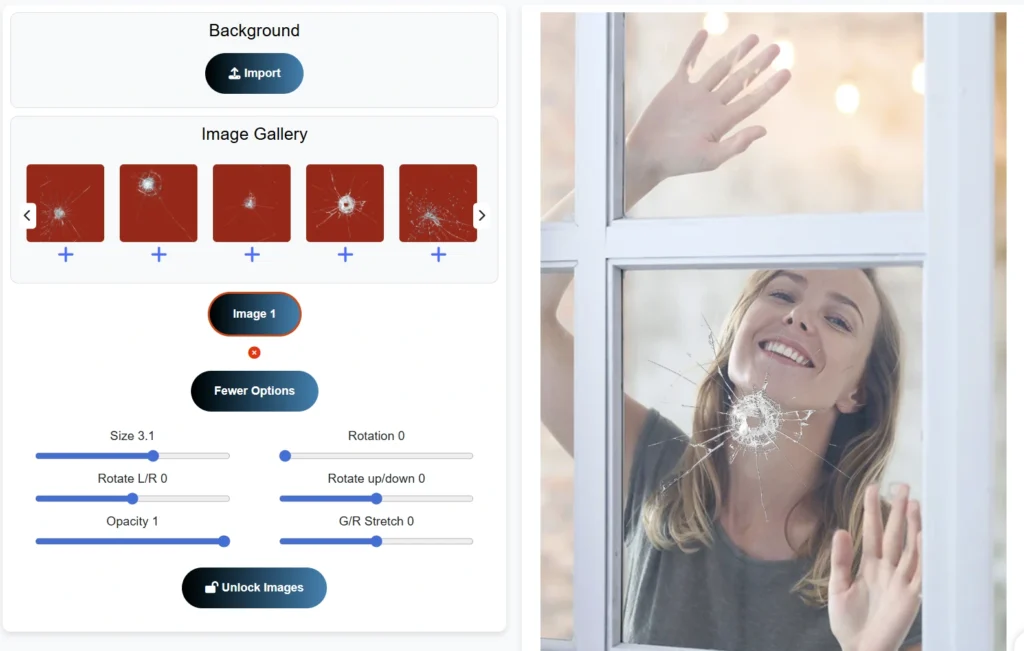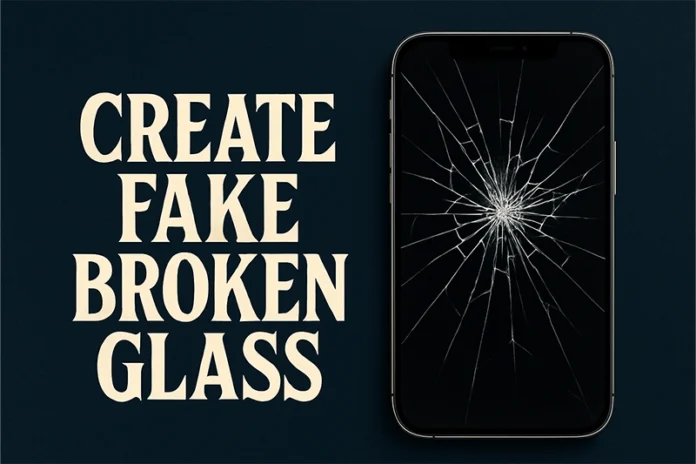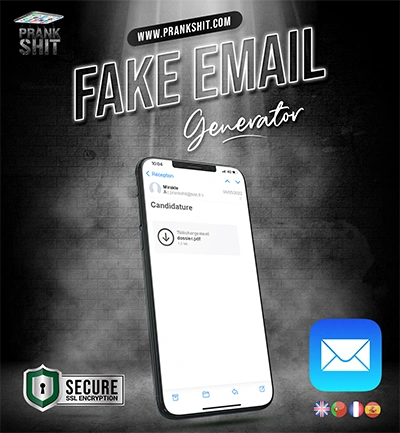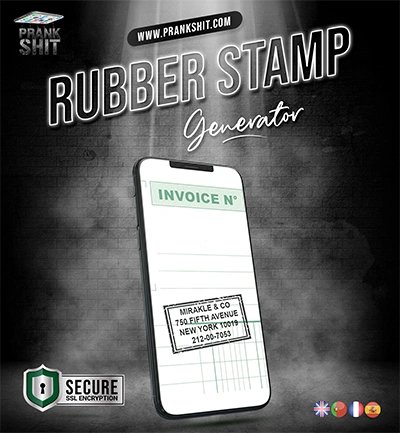Visual pranks are exploding across social media platforms, and there’s a good reason why. They’re instant, shocking, and incredibly shareable. With the right tool, you can make anyone believe that your iPhone screen is completely shattered, a window has been smashed, or your computer monitor took a direct hit. The fake broken glass generator from Prankshit.com offers a simple, effective, and hilarious solution that transforms any ordinary image into a convincing disaster scene.
Gone are the days when you needed expensive photo editing software or advanced technical skills to create realistic visual effects. This innovative tool puts the power of deception right at your fingertips, allowing you to craft the perfect prank in just seconds. Whether you’re looking to pull off an epic April Fools’ joke, create viral content for your social media, or simply want to give your friends a good scare, mastering the art of fake broken glass effects opens up endless possibilities.
The beauty of this approach lies in its simplicity and authenticity. Unlike obvious joke images that immediately scream “fake,” a well-crafted broken glass effect can fool even the most observant viewers. The key is understanding how to use the available tools effectively, choosing the right base images, and applying realistic crack patterns that match real-world scenarios.

How the Fake Broken Glass Generator Works
The fake broken glass generator operates on a straightforward principle: take any image and overlay it with ultra-realistic shattered glass effects. You can upload photos of phones, computer screens, windows, car windshields, or virtually any surface that could conceivably break. The tool then applies sophisticated crack patterns that mimic how glass actually fractures in real-world scenarios.
What sets this generator apart from basic photo editing apps is its attention to detail. The crack patterns aren’t just random lines drawn over your image—they follow the physics of how glass actually breaks. This includes radiating patterns from impact points, realistic fragment shapes, and proper light reflection that makes the damage appear three-dimensional.
The process is remarkably user-friendly. Simply visit the platform, upload your chosen image, and watch as the interface provides real-time previews of your fake broken screen or fake broken computer screen. The instant feedback allows you to experiment with different effects until you achieve the perfect level of destruction for your prank.
Users get access to six high-quality broken glass effects completely free. These basic options cover the most common prank scenarios and provide excellent results for casual users. However, for those serious about their pranking game, a small €2 payment unlocks over 30 premium effects for one full hour. These premium options include varied crack patterns, different impact styles, and regularly updated designs that keep your pranks fresh and unpredictable.
Detailed Customization Options
The real magic happens in the customization panel, where you can fine-tune every aspect of your fake broken phone screen or window effect. Each adjustment option serves a specific purpose in creating maximum realism and impact.
Rotation Control allows you to spin the crack pattern 360 degrees, ensuring the damage aligns perfectly with your image’s orientation. This feature is crucial when working with phones or tablets that might be photographed at various angles. A crack that runs naturally with the device’s orientation looks far more believable than one that seems arbitrarily placed.
Horizontal and Vertical Tilt adjustments let you modify the angle of the primary crack lines. Real glass breaks follow the direction of impact force, so being able to adjust these angles helps you simulate realistic damage scenarios. For instance, a phone dropped corner-first would show different crack patterns than one that hit the ground flat.
Opacity Settings control how transparent or opaque the broken glass effect appears. This is particularly important when creating fake glasses effects or working with images that have complex backgrounds. Sometimes a subtle crack works better than an obvious shatter, especially if you’re aiming for a prank that builds suspense rather than immediate shock.
Size Adjustment enables you to scale the impact area up or down. A small crack might suggest minor damage, while a massive shatter pattern indicates catastrophic failure. This control helps match the severity of the “damage” to your prank’s story.
Stretch Controls (both horizontal and vertical) allow you to manipulate the shape of the crack pattern. You can create wide, spreading damage or narrow, concentrated impacts. This feature is invaluable when adapting the effect to different screen shapes or surface areas.
Multiple Layer Support might be the most powerful feature of all. Real accidents often create multiple impact points, and this tool lets you stack different crack patterns on the same image. You can simulate a phone that’s been dropped multiple times or a window hit by several objects.
Custom Background Upload functionality means you’re not limited to stock images. Upload photos of your actual devices, your friend’s car, or any surface you want to “break.” This personal touch makes pranks infinitely more convincing and targeted.
Creative Prank Ideas Using Fake Broken Glass
The fake broken screen prank remains one of the most effective jokes because everyone can relate to the horror of a damaged device. Create a fake broken phone screen using a photo of your actual phone, then leave it where a family member or friend will find it. The initial shock of seeing an expensive device apparently destroyed never gets old. For maximum impact, use a photo taken in familiar surroundings—your desk, car, or favorite coffee shop.
Window and glass door pranks work exceptionally well in office environments or shared living spaces. Take a photo of an intact window, apply a dramatic shatter effect, and send it to roommates or colleagues with a message about an “accident.” The key is timing—send these during busy periods when people won’t immediately investigate in person.
Computer and laptop screen pranks target our modern dependence on technology. A fake broken computer screen effect applied to a photo of someone’s workstation can create genuine panic, especially if sent during important project deadlines. Consider the recipient’s stress levels and relationship with you before deploying this particular prank.
Television screen breaks work brilliantly during major sporting events or highly anticipated show premieres. Create a convincing fake broken screen image of the family TV and share it in group chats just before game time. The combination of timing and shared investment in the viewing experience amplifies the prank’s impact.
Vehicle windshield or window pranks tap into expensive repair anxieties. A well-crafted image of a cracked windshield sent to a car owner can create immediate concern about repair costs and safety. These work best when you can reference recent parking situations or weather events that could plausibly cause damage.
Creative meme applications extend beyond traditional pranks. Apply fake glasses effects to famous images, movie stills, or popular memes to create shareable content. A shattered effect on an iconic photo can add humor while commenting on current events or cultural moments.
Advanced Techniques for Maximum Realism
Creating truly convincing fake broken glass effects requires understanding how real glass actually breaks. Different materials create distinct crack patterns, and matching these patterns to your base image dramatically improves believability.
Phone screens typically show spider web patterns radiating from impact points, with smaller secondary cracks filling the spaces between major fractures. The most convincing fake broken phone screen effects place the primary impact point off-center, as this mirrors how phones typically hit the ground during drops.
Computer monitors and laptop screens crack differently due to their size and construction. Large screens often show single long cracks that run across the entire display, sometimes with branching patterns. When creating fake broken computer screen effects, consider the screen’s aspect ratio and typical mounting or support points.
Window glass breaks in yet another pattern, often featuring large triangular or irregular shaped pieces rather than the fine web patterns of tempered glass. Car windshields have their own characteristic “safety glass” appearance, with thousands of small cube-shaped pieces held together by internal films.
Lighting plays a crucial role in realism. Real broken glass reflects light differently than intact surfaces, creating highlights along crack edges and shadows in recessed areas. The best fake glasses effects incorporate these lighting changes to enhance the three-dimensional appearance of damage.
Environmental context adds another layer of authenticity. A cracked phone screen might show reflection changes, color distortion, or dead pixels in damaged areas. Windows might have pieces missing or hanging loose. Adding these details through careful effect placement and opacity adjustments separates amateur pranks from professional-quality deceptions.
Technical Tips for Professional Results
Achieving professional-quality results requires attention to detail and understanding your audience’s expectations. Start with high-resolution base images whenever possible. Low-quality source photos become obviously fake when detailed crack effects are applied, as the resolution mismatch becomes apparent.
Consider the viewing context for your final image. Photos that will be viewed on small phone screens can handle more dramatic effects than those displayed on large monitors where every detail is scrutinized. Adjust your effect intensity accordingly.
Pay attention to compression artifacts when saving your final images. Most social media platforms compress uploaded images, which can affect the realism of fine crack details. Test your pranks on the platforms where they’ll be shared to ensure the effects survive compression.
Timing and delivery method significantly impact prank effectiveness. A fake broken screen image sent via text message carries different implications than one posted on social media. Text messages suggest immediate, personal relevance, while social posts might be interpreted as general content sharing.
Documentation and backup plans help manage prank aftermath. Save original, unedited versions of your base images so you can quickly prove the prank’s artificial nature if reactions become too intense. Have explanation strategies ready for situations where the joke goes too far.
Safety and Ethical Considerations
While fake broken glass pranks can be hilarious, they also touch on genuine anxieties about expensive device damage and property destruction. Consider your target’s current stress levels, financial situation, and relationship with technology before deploying these pranks.
Avoid pranks that could cause panic in emergency situations or professional environments where equipment failure has serious consequences. A fake broken computer screen during a crucial presentation or system maintenance period crosses the line from harmless fun into potentially disruptive behavior.
Be prepared to reveal the truth quickly if your prank causes genuine distress. Some people have strong emotional reactions to perceived property damage, especially involving items with sentimental value or professional importance. Having immediate ways to demonstrate the artificial nature of your images prevents harmless jokes from causing lasting upset.
Consider the broader context of your relationships with prank targets. Repeated technology-related pranks might erode trust in your technical reliability or create ongoing anxiety about device safety. Balance humor with maintaining positive relationships.
Maximizing Social Media Impact
The viral potential of fake broken glass content depends on timing, presentation, and audience engagement strategies. Platform-specific considerations affect how you should format and present your pranked images for maximum impact.
Instagram favors high-quality, visually striking content. Use dramatic crack effects and compelling captions that tell a story about the “accident.” Consider creating before-and-after posts or stories that build suspense before revealing the prank.
TikTok’s video format allows for creative reveals and reaction captures. Film yourself or others discovering the “damage,” then reveal the prank process. Educational content showing how the effects are created can attract audiences interested in digital art and pranking techniques.
Twitter’s fast-paced environment works well for immediate reaction pranks. Share fake broken screen images with dramatic captions during peak engagement hours when your audience is most active and likely to interact.
Facebook’s diverse age demographics require careful consideration of humor styles and technical literacy levels. What seems obviously fake to digital natives might appear completely realistic to less tech-savvy users.
Troubleshooting Common Issues
Even with powerful tools, creating convincing fake broken glass effects can present challenges. Understanding common problems and their solutions helps you achieve consistently professional results.
Resolution mismatches between base images and effect overlays create obvious artificial appearances. Always start with the highest quality source images available, and ensure your final output maintains sufficient resolution for your intended viewing context.
Unrealistic crack patterns often result from poor effect placement or inappropriate sizing. Study real broken glass examples to understand natural fracture patterns, then adjust your tool settings to match these realistic appearances.
Lighting inconsistencies can immediately reveal artificial effects. Pay attention to the lighting conditions in your base image and choose crack effects that match the apparent light sources and shadow directions.
Color and contrast issues arise when effect overlays don’t properly integrate with background images. Use opacity and blending adjustments to ensure crack patterns appear as natural parts of the original surface rather than obvious overlays.
Getting Started Today
Ready to create your own perfect fake broken glass prank? Head over to Prankshit.com and explore the free fake broken glass generator. Start with the six complimentary effects to get familiar with the interface and customization options.
Experiment with different base images to understand how various surfaces and lighting conditions affect the realism of your results. Try photographing your own devices and surfaces to create personalized prank content that targets specific friends or family members.
Consider upgrading to the premium effects collection for €2 to access the full range of creative possibilities. The expanded library includes specialized patterns for different types of glass and damage scenarios, plus regular updates that keep your pranking arsenal fresh.
Remember to document your pranking adventures responsibly and always prioritize relationships over reactions. The best pranks create laughter and amazement rather than genuine distress or lasting anxiety.
Master the Art of Visual Deception
The fake broken glass generator from Prankshit represents the perfect intersection of accessibility, realism, and creative potential. With simple tools that require no technical expertise, anyone can create convincing visual pranks that rival professional special effects.
Success in visual pranking comes from understanding your audience, choosing appropriate timing, and maintaining the delicate balance between surprise and genuine distress. The most memorable pranks create moments of shock followed immediately by relief and laughter when the truth is revealed.
As social media continues to evolve and visual content becomes increasingly important, mastering these digital deception techniques opens doors to creative expression beyond simple pranks. Content creators, digital artists, and social media enthusiasts can all benefit from understanding how realistic visual effects are created and deployed.
Visit Prankshit.com today to test the fake broken glass generator for free and discover just how realistic your pranking game can become. With just a few clicks, you’ll be creating visual deceptions that fool even the most observant viewers while building your reputation as a master of harmless digital mischief.




